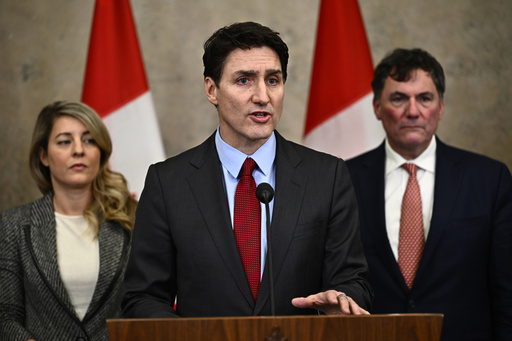
President Donald Trump’s initiative to implement tariffs on imports from Mexico, Canada, and China is partially intended to address the significant issue of fentanyl trafficking into the United States. This potent opioid has been linked to approximately 70,000 overdose deaths each year in the country.
In a recent agreement with Trump, Mexico has committed to deploying 10,000 troops to the U.S.-Mexico border, allowing for a temporary suspension of these tariffs, while also agreeing not to impose tariffs of its own.
In contrast, Canada and China have not indicated substantial modifications to their strategies regarding the control of fentanyl entering the U.S., maintaining their stance to retaliate in response to any tariffs imposed by the U.S.
Understanding the origins of fentanyl is crucial to addressing this issue. The components necessary to manufacture fentanyl are primarily produced by Chinese firms, which pharmaceutical companies utilize to manufacture legitimate painkillers. However, some of these pre-cursor chemicals are acquired by drug cartels in Mexico, particularly the Sinaloa and Jalisco cartels, who synthesize the opioid in clandestine laboratories. These cartels smuggle the drug into the U.S., often using official ports of entry in states like California and Arizona. The small quantities of fentanyl transported—due to its potency being 50 times stronger than heroin—and its lack of odor, complicate enforcement efforts significantly.
Canada also participates in the fentanyl manufacturing process, albeit on a smaller scale. For example, U.S. customs officials confiscated 43 pounds (19.5 kilograms) of fentanyl from the Canadian border in the last fiscal year, which starkly contrasts with the 21,100 pounds (9,570 kilograms) seized at the Mexico border. This surge in fentanyl interceptions has increased significantly since President Joe Biden took office, possibly indicating advancements in detection methods.
Following Trump’s tariff threats, Mexico reported a significant bust of over a ton of fentanyl pills, marking the largest seizure of synthetic opioids in its history. The timing of this seizure is notable because fentanyl confiscations in Mexico had drastically declined earlier in the year until the December announcement. Under President Claudia Sheinbaum’s administration, Mexican security forces appear to be adopting a more stringent approach compared to former President Andrés Manuel López Obrador, who publicly dismissed fentanyl production in Mexico.
In exchange for delaying tariffs, Mexican authorities have deployed National Guard troops to the border to combat drug smuggling, while the U.S. has promised to strengthen initiatives to curb illegal arms trafficking into Mexico, based on statements from both Trump and Sheinbaum.
Canadian Prime Minister Justin Trudeau has responded to the tariff threats by emphasizing his government’s recent investment of $1.3 billion towards border security enhancements, including advanced chemical detection technology and a new unit dedicated to monitoring precursor chemicals. Following Trump’s tariff announcement, Trudeau expressed his disapproval, stating, “We, too, are devastated by the scourge that is fentanyl,” emphasizing the necessity for collaboration to tackle these challenges instead of divisive actions.
China, meanwhile, has outlined its efforts to control fentanyl trafficking amid a backdrop of inconsistent cooperation with the United States. Despite not facing a fentanyl crisis domestically, Chinese authorities do not prioritize this issue similarly to the U.S., according to experts like Zongyuan Zoe Liu from the Council on Foreign Relations.
Effectively dealing with the production and distribution of illicit fentanyl is complex. Unlike substances like heroin or cocaine that derive from plant sources, fentanyl is synthesized using legal pharmaceutical ingredients and can be produced in low-cost labs that can be quickly established. The persistent demand for this addictive drug in the U.S. continues to pose a major challenge.
Mike Vigil, ex-chief of international operations for the U.S. Drug Enforcement Administration, expressed doubts that merely increasing troop presence along the border would significantly curb fentanyl trafficking. He emphasized the need for advanced detection technologies in addition to manpower, as once fentanyl leaves production sites, it is often cleverly concealed within vehicles or large cargo trucks. Vigil also noted that addressing the fentanyl epidemic would necessitate broader collaboration beyond just the United States and its neighboring countries. “Even if Mexico, Canada, and others successfully eliminated the drug trade, as long as there is demand, another country will step in to fill the void,” he remarked.

